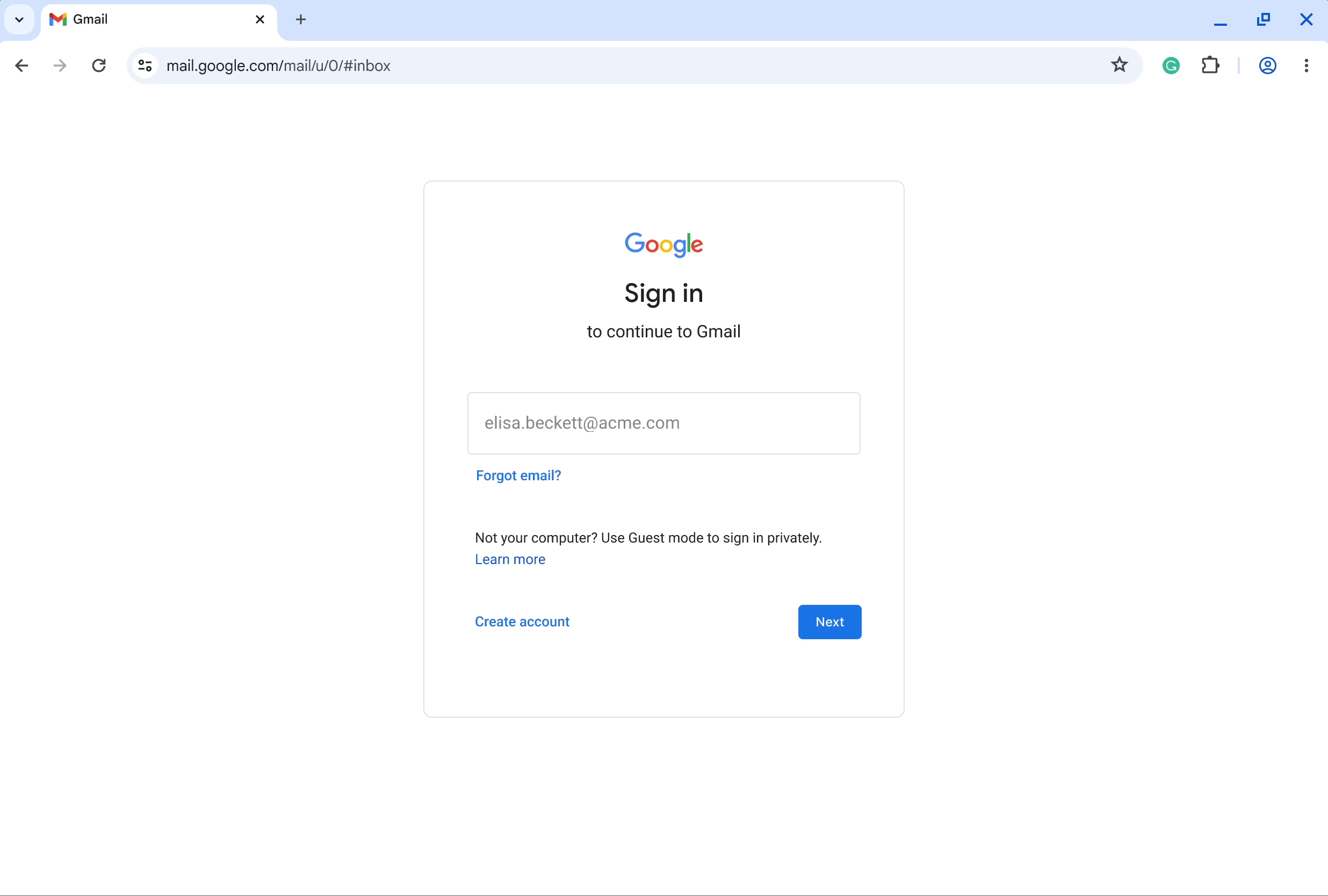In today’s hybrid work environments, the browser has evolved into the primary endpoint for accessing corporate applications and data. This presents both opportunities and challenges for IT administrators who need to secure and manage this critical access point. For organizations leveraging Google Workspace to foster real-time communication and collaboration, this is even more applicable since Workspace apps like Gmail and Google Docs don’t require dedicated desktop client apps and just work in the browser.
IT admins need to manage the access point and choose the best work environment for their users to be productive. Chrome Enterprise already offers multiple layers of management—at the machine level, the user level, and the profile level. In this update, we’ll cover new profile management capabilities available for IT teams and new productivity features for Workspace users.
Improving Chrome profiles and profile management for Workspace customers
Chrome Enterprise continues to enhance its profile management capabilities, for users signed in to Chrome, to give admins even more control and flexibility. Admins choosing to manage their fleet at the profile level get a range of benefits:
- Customization and Granular Policy Controls: Tailor Chrome settings and policies for specific user groups or roles within your organization.
- Enhanced Security and Compliance: Enforce security policies at the profile level, ensuring sensitive data remains protected even on personal devices (BYOD).
- Ideal for personal devices and Extended Workforce: Provide a secure and managed browsing environment on personally owned or contractor devices, without compromising user security and privacy.
- Clear Separation of Work and Personal Data: Enable users to maintain distinct work and personal profiles, improving both productivity and end user experience.
Workspace customers can now get more visibility into Chrome user profiles in their organization with new profile lists and reporting with Google Cloud Identity. This centralized view provides detailed reports about user profiles in your organization, including browser version, applied policies, installed extensions, and more. This feature will be generally available later this year.

Admins also benefit from new Device Trust Connectors with Okta, Ping, and Cisco Duo for context-aware access. Chrome can share device signals with partners when a user is signed in to Chrome (or when a user is in a Chrome Profile). This empowers admins to construct context-aware access controls for their extended workforce without needing to manage the device. Workspace customers can also use Workspace context aware access controls or Chrome Enterprise Premium to share signals and restrict access to Workspace and other SaaS applications.
In the coming weeks, we’re also launching a new sign-in flow to Chrome that gives more transparency to business users, making it easier for them to tell they are in a managed browser and allowing them to more clearly separate their work and personal Chrome profiles. Now business users will get visibility into how their profile and device are managed and what types of data their organization has access to. They can also move any existing bookmarks, extensions or other browser data to their work profile from their personal profile, or keep them separate.

Better tab experiences and wayfinding
Enterprise browsers support employee productivity, and our team is constantly working to make using the web easier and more efficient. We’re excited to share some new productivity tools for managed users:
In addition to existing new tab page customization options and the integration with Google Drive, Workspace users can now also see an overview of their daily Google Calendar when they open a new tab, giving them easy access to their schedule and virtual meetings. This feature is currently rolling out, so be on the lookout!

Site search shortcuts are a way to use the address bar as a search box for a specific site without directly navigating to the site’s URL. Admins can now create site shortcuts on behalf of your users to shortcut to the most critical enterprise sites. These can be tailored to specific groups, such as giving the entire sales team easy access to Salesforce. This feature is now rolling out and will be available for all managed users, even if they aren’t using Workspace.

Finally, we have new tab improvements across platforms for all users:
- Last year, we made it possible to manually save and sync your tab groups in Chrome desktop, making them accessible on another computer. Now, your groups automatically save and sync across all your devices, so you can easily pick back up where you left off on your browsing journey, no matter the device. This feature is coming to Chrome on desktop, Android and iOS.
- Chrome is also experimenting with suggesting pages to revisit based on tabs you opened up on your other devices. This can be especially helpful when you’re browsing a website while at the office and want to pick up where you left off on the commute home from another device. Chrome will proactively suggest pages to revisit on the Chrome New Tab page.
We are excited to continue innovating and delivering even more value to Chrome Enterprise users. Many of the capabilities we’ve covered today can be set and configured from our cloud management tool, Chrome Enterprise Core, get started here. For organizations looking for more advanced security capabilities through Chrome, learn more about Chrome Enterprise Premium. Happy browsing!

